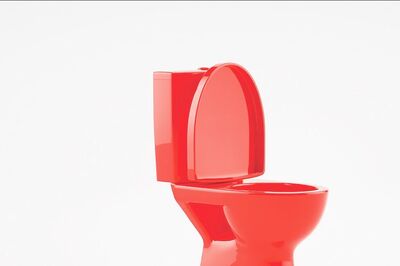
views
It is marriage season in Bihar but it is Delhi Chief Minister Arvind Kejriwal who is having trouble sleeping ahead of Lok Sabha polling in the national capital on May 12.
During the assembly polls in the spring of 2015, the Aam Aadmi Party had fielded 15 candidates out of 70 from among Purvanchal migrants and most of them had romped home.
He had repeated the formula of ‘empowering Purvanchalis’ during the 2017 municipal polls and AAP had managed to pip the Congress to be the runner-up. If the Purvanchalis are not present in Delhi on May 12 in full strength, bells could toll for the AAP.
According to estimates, 33.5 per cent of the total 1.36 crore voters across the seven Lok Sabha constituencies are Purvanchalis. Their presence varies from 24 per cent in Chandni Chowk to 41 per cent in east Delhi.
On the north-east Delhi seat, they constitute 40 per cent of the votes, while they account for 37 per cent voters in New Delhi, 34 per cent in west Delhi, 31 per cent in north-west Delhi and 27 percent in south Delhi. Today, there isn’t a constituency in Delhi where ‘Chhath’ festival of Bihar is not celebrated.
No wonder then that after the defeat in the 2015 assembly polls, the BJP decided to hoist Bhojpuri film actor-singer Manoj Tiwari as party’s Delhi unit president. Tiwari had joined the saffron party just ahead of the 2014 Lok Sabha polls, got a ticket from north-east Delhi and won the seat.
All the three parties have fielded at least one prominent Purvanchali candidate – Mahabal Mishra (Congress - west Delhi), Manoj Tiwari (BJP - north-east Delhi) and Dilip Kumar Pandey (Aam Aadmi Party - north-east Delhi).
The migrants from the eastern districts of Uttar Pradesh, Bihar, Jharkhand and some districts of Madhya Pradesh bordering these areas for long have been looking for a role in the politics of the national capital.
The migration from these states started long back and trainloads of people arrived in the last decade of the last century to look for work. With rural conflict and distress increasing by the day under Lalu Prasad-Rabri Devi regime, the shifting of the population from the rural and semi-urban areas soon overtook those coming from the cities and towns.
This population in Delhi found livelihood in the industrial estates, business districts, government offices, realty sector and construction sites and refuge in the urbanized villages of the city. Soon, this population built their homes in the unauthorized colonies of Delhi, which at the last count were about 1800.
Such large population easily converts into political capital, something which the BJP failed to foresee. It depended largely on the traditional Vaishya-Punjabi votes, whereas the Congress gave them limited exposure.
Congress leader Mahabal Mishra became the first recognizable face of the Purvanchal voters in the capital. He started of as a municipal councilor in 1996, became an MLA in 1998 and finally a member of the Lok Sabha in 2009. The ‘Purvanchalis’ largely remained with the Congress till the 2009 elections before being wooed by the Aam Aadmi Party (AAP).
This time, the stake of Purvanchal votes is very high in north-east Delhi where both Tiwari and Pandey are vying for a major share of the pie.
Congress candidate Sheila Dikshit, given her goodwill in the community and her status as daughter-in-law of UP Congress stalwart Uma Shanker Dikshit, should also get her some share of the votes, though her strategy is more focused on wooing back to the Congress fold the large minority votes in the constituency.
In west Delhi, Mahabal Mishra would try to consolidate the community votes which had spurred his victory in 2009, breaking the myth that West Delhi was a Punjabi seat. A large portion of the minority voters in the national capital too consist of migrants from the eastern districts of UP and Bihar.
During the 15 years of Sheila Dikshit rule in Delhi, the minorities and the non-Muslim Purvanchalis largely voted for the Congress. This combination the grand old party lost to the AAP in 2013 assembly polls, and the support dwindled further in 2014 and 2015 Lok Sabha and assembly elections respectively.
Will the AAP be able take the benefit of this patronage once again is the question for Kejriwal and his associates. If the Purvanchal voters in the absence of any pro-AAP sentiments decide to take early summer vacations, given the marriage season, the ruling party in Delhi could be left licking its wounds.
There is also an outside chance of chasm within the Purvanchali votes. The upper-caste migrants may go with the BJP, given the preference for the party in their home states. The backward castes may go with the minorities as has been their preference in the states of UP and Bihar.
If there is a divide in the community votes, it could toss up a completely new political scenario in the national capital, throwing the poll calculations of the political pundits and the practitioners completely haywire.
(The writer is a senior journalist and political analyst. Views expressed are personal.)




















Comments
0 comment